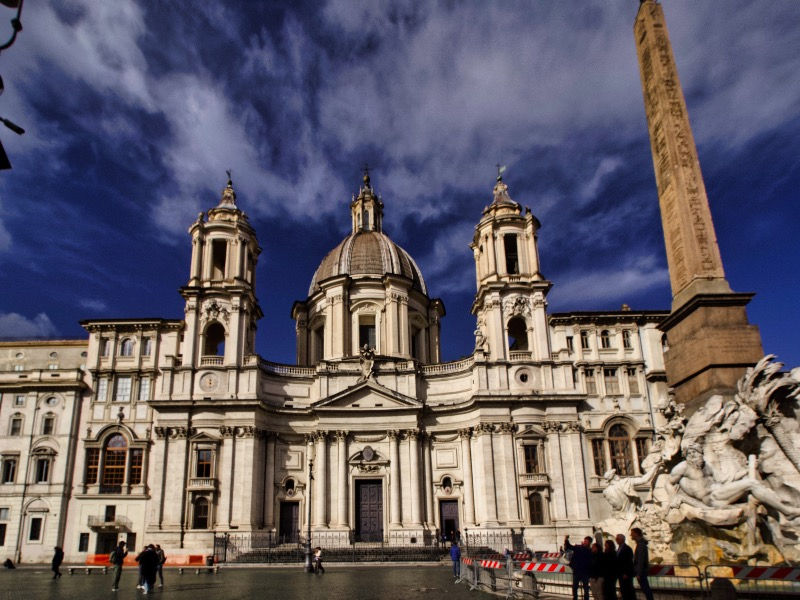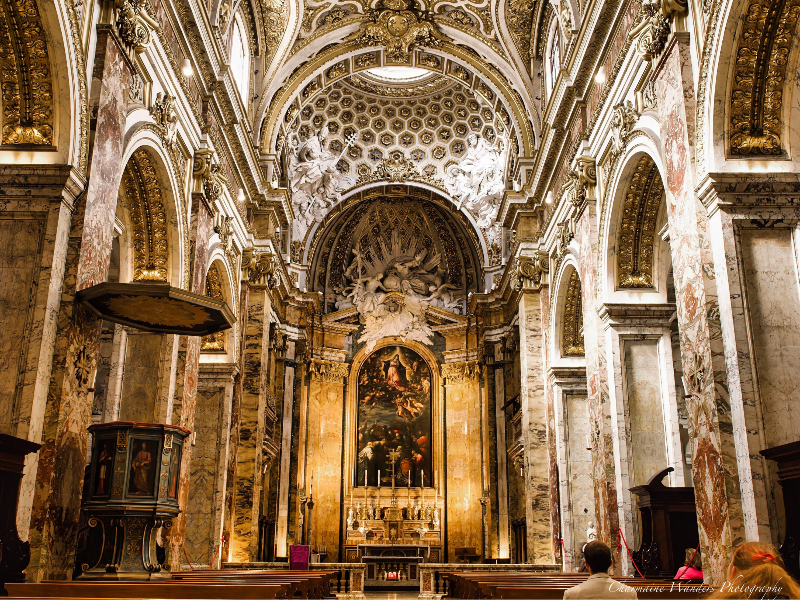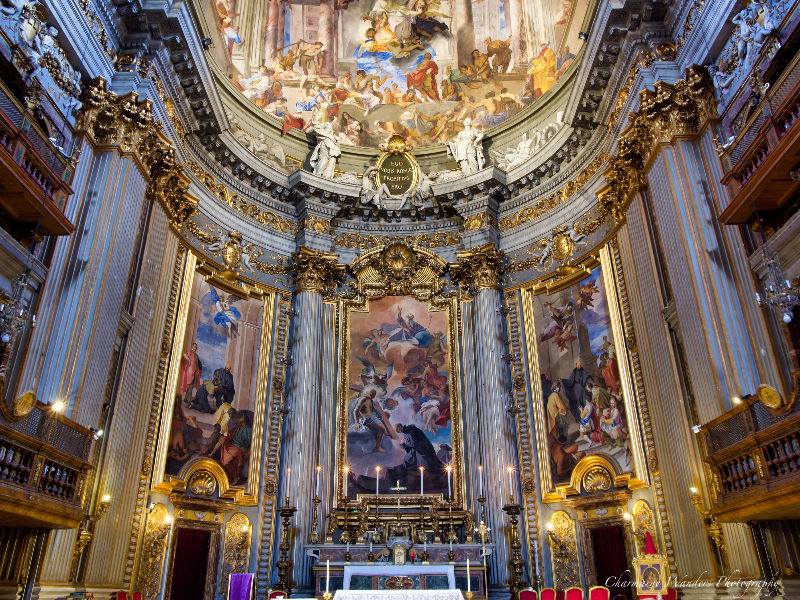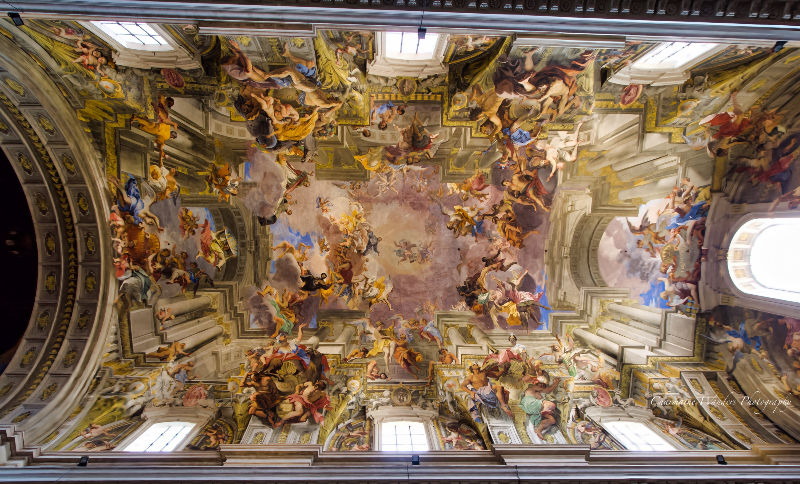Best Rome Churches to Soak Up History
- Charmaine Warren
- Jun 8, 2024
- 5 min read
While walking around Rome we had started to notice that every block seemed to have its church. Of course, we could not help but check out each of them, and as a result welcome to our blog post about our favorite historic churches in Rome!
Why does Rome have so many churches?
Rome, the world capital of churches, boasts over 900 of them scattered across the city. Historians, teachers, and archaeologists have attempted to count them, but the official number remains a mystery.
Let's take a trip back 2,000 years ago to the Roman Empire's heyday. Religion in ancient Rome was polytheistic, with new gods introduced after each conquest. However, Christianity was a game-changer. Despite being considered illegal and dangerous due to its belief in equality, it spread to Rome with figures like St. Peter, St. Paul, and other disciples.
As the city grew into a multiethnic hub with a million inhabitants, churches became not just places of worship but also symbols of defiance and faith. This isn't your typical history lecture though let me share the insights we gained as checked out each of these churches
Church of St Agnes
Let's kick things off with a bit of backstory. The Church of St. Agnes has been standing tall since the 7th century a.C., showcasing a blend of ancient Roman and Baroque architecture that'll make your jaw drop (and maybe inspire you to take up architecture as a hobby).
Located in Piazza Navona, Sant'Agnese in Agone is as fascinating as its design. Built on the site of the ancient Stadium of Domitian, where Saint Agnes was martyred, the church is a tribute to her bravery. But its construction was a saga in itself. Two architectural titans, Borromini and Rainaldi, clashed over the design, leaving a unique footprint - a wide facade with a surprisingly shallow depth.

The church is gorgeous inside but your eye would be drawn to the altar. Saint Agnes, a mere thirteen years old, defied the Roman emperor Diocletian during Christian persecution. Her unwavering faith led to her martyrdom, and the church, built on the supposed site of her execution, became a pilgrimage destination for centuries. The presence of her skull although a bit creepy adds a tangible layer of history to the church. It's a stark reminder of the sacrifices made in the name of faith and a connection to the young woman whose bravery inspired countless others.

Basilica di Santa Maria in Ara Coeli
Situated atop the Capitoline Hill, the origins of the Basilica di Santa Maria in Aracoeli trace back to the 6th century when a church was first erected on this site. Over the centuries, it underwent several renovations and reconstructions, blending elements of Romanesque, Gothic, and Baroque styles to create the stunning edifice we see today.

Stepping inside, visitors are greeted by a grand interior adorned with exquisite frescoes, intricate marble sculptures, and a majestic wooden ceiling that whispers tales of bygone eras. The basilica's impressive architecture not only reflects the evolution of Roman art and craftsmanship but also serves as a spiritual beacon for the faithful.

One fascinating historical fact about the Basilica di Santa Maria in Aracoeli is its association with the renowned medieval philosopher and theologian, St. Thomas Aquinas. Legend has it that the saint's miraculous encounter with the Christ Child occurred within these sacred walls, further enhancing the basilica's significance in the Catholic tradition.
St. Louis of the French
When I saw this church on one of our walks, being from St. Louis, I said that we needed to stop there. Glad we did because the church is beautiful. You'll find a blend of artistic beauty and spiritual tranquility. The ornate marble altars, intricately carved furnishings, and serene chapels reflect Rome's artistic heritage.

St. Louis of the French has a fascinating historical context dating back to the late 16th century when it was commissioned by Cardinal Giulio della Rovere, later Pope Julius II, as a tribute to the French community in Rome. What makes St. Louis of the French special are its unique features, including a cycle of paintings by the renowned Baroque artist Caravaggio. These masterpieces, such as "The Calling of Saint Matthew" and "The Martyrdom of Saint Matthew," are known for their captivating storytelling and innovative use of light and shadow.

Basilica of Saint Paul Outside The Walls
When in Rome, don’t miss the Basilica of Saint Paul Outside The Walls. Although outside Rome's old city walls, it is still one of the most important churches in Rome. The basilica dates back to the 4th century AD, commissioned by Emperor Constantine over Saint Paul the Apostle’s burial site. It's one of Rome’s four major papal basilicas, and the tomb beneath the main altar has been a pilgrimage site for centuries.

Approaching the basilica, the stunning façade with a majestic mosaic and grand statues sets the scene. Inside, the vast nave with 80 towering columns, an intricate gilded ceiling, and richly decorated chapels tell a story of artistic brilliance. The 13th-century apse mosaic depicting Christ with saints and the serene cloister are must-see highlights.

Saint Ignazio Church
Saint Ignazio Church was built in the late 17th century, beginning in 1626 under Jesuit architect Orazio Grassi and completed in 1650. It served as the chapel for the Collegio Romano, an important Jesuit institution. Named after Saint Ignatius of Loyola, the church celebrates the Jesuits' contributions to education, intellectual research, and missionary work.

The church is a stunning example of Baroque design, characterized by dramatic use of space, light, and elaborate decoration. Inside, Andrea Pozzo's magnificent frescoed ceiling, completed between 1685 and 1694, depicts the Apotheosis of Saint Ignatius. Pozzo's ingenious use of perspective creates the illusion of a soaring dome, despite the flat ceiling.

The richly adorned interior features marble, stucco, and gilded decorations. The grand nave, flanked by side chapels, leads to the high altar, adorned with sculptures and reliefs depicting scenes from Saint Ignatius's life. One of the most intriguing features is the "fake dome" a trompe-l'œil painting by Pozzo that gives the illusion of a three-dimensional dome. I mean these pictures don't do it justice but it does does look like an actual dome

Saint Mary in Cosmedin
Saint Mary in Cosmedin, or Santa Maria in Cosmedin, is a stunning example of medieval church architecture. Built-in the 8th century on the remains of an ancient Roman temple dedicated to Hercules, the church's foundation tells a story of transformation from paganism to Christianity.

Inside, the church boasts a simple yet elegant design, with a nave flanked by ancient columns repurposed from earlier Roman buildings. The floor's beautiful Cosmatesque mosaic, a hallmark of medieval Roman art, adds to the church's charm. Another highlight is the 8th-century schola cantorum, an enclosed space for the choir, which features exquisite marble carvings.

And that is it!
Rome’s churches are not just places of worship; these Rome architectural landmarks are storied architectural marvels that encapsulate the city's rich cultural heritage. From the grandeur of the Basilica Papale di Santa Maria Maggiore to the intricate frescoes of Saint Ignazio Church, each church offers a unique glimpse into Rome's history and artistic brilliance.
Each of these churches tells a story, reflecting the evolution of architectural styles, religious practices, and artistic expressions over the centuries. Visiting these churches is like stepping into different eras of Rome’s history, where every stone and fresco has a tale to tell.
So, lace up your walking shoes, grab a map, and embark on a journey through Rome’s ecclesiastical treasures and soak up history from the best Rome churches. Let the awe-inspiring architecture and the deep sense of history inspire you, leaving you with memories and insights that will last a lifetime. Have you been to Rome and visited churches? What are your favorite churches in Rome?
TTYL

Commenti